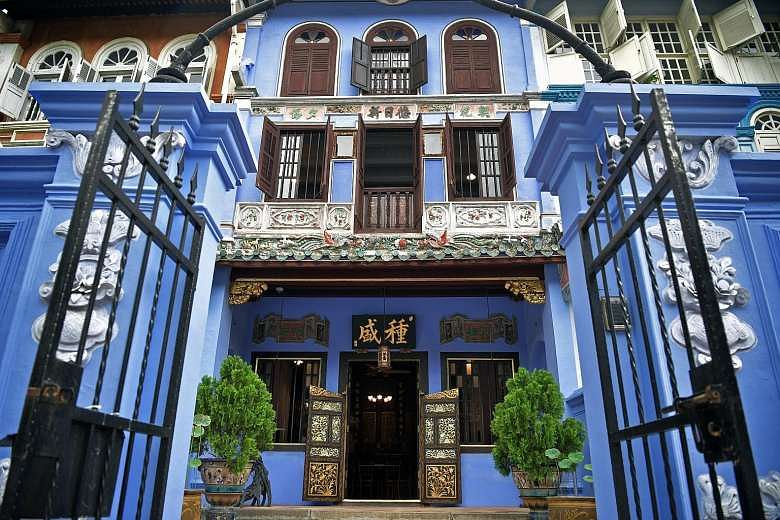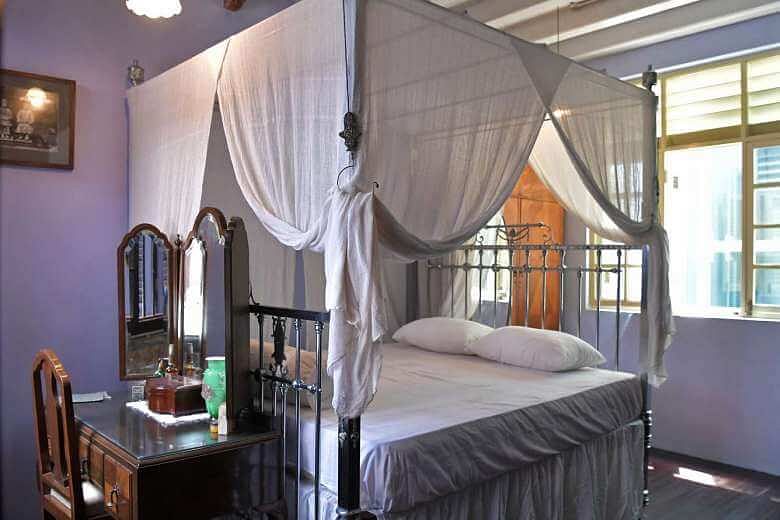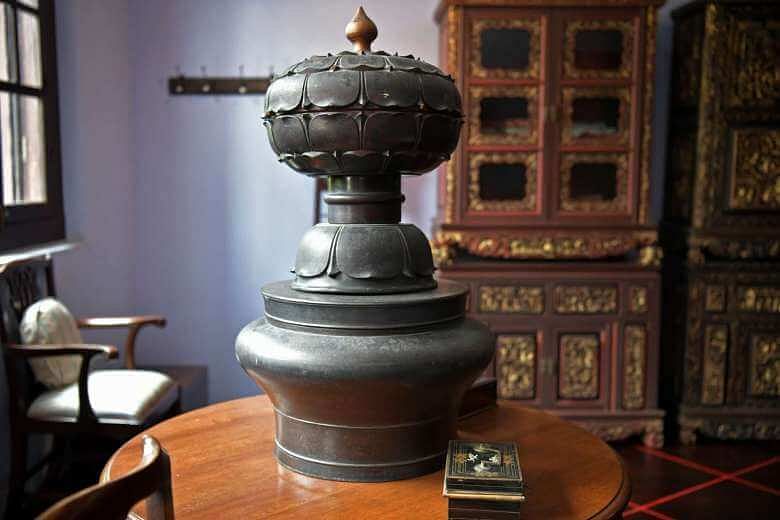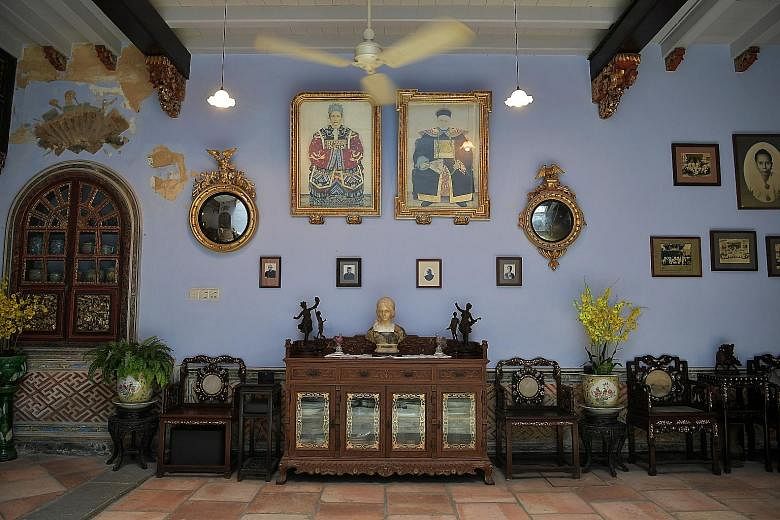Spring-cleaning is no piece of cake when the house in question is more than 100 years old.
Crumbling walls and floors scuffed and scratched by the feet of 25,000 visitors forced the National University of Singapore (NUS) Baba House to close in September for extended renovations, for the first time since it opened in 2008.
The 157 Neil Road townhouse, which stands out from its neighbours with its bright coat of ultramarine, is a museum that allows the public to explore a turn-of-the-century Peranakan home.
It reopened this week after a two-month closure and also launched a new book that offers a closer look at the hundreds of artefacts within it.
The house, which was built in the 1890s and belonged to the descendants of Straits-Chinese shipping tycoon Wee Bin, has been showing its age.
-
VIEW IT /NUS BABA HOUSE HERITAGE TOUR
-
WHERE: 157 Neil Road
WHEN: 2pm (Mondays), 2 and 6.30pm (Tuesdays), 10am (Thursdays) and 11am (Saturdays)
ADMISSION: Free. Call 6227-5731 or e-mail babahouse@nus.edu.sg. Book at least three weeks in advance
Damp has been a perennial problem through the years, says NUS Museum curator Foo Su Ling, 54. But major cracks in an outside wall two years ago led to water seepage that caused the plaster of the walls inside to crumble. The wooden floor of the second storey, where the house's elaborate bedrooms are located, also had to be revarnished.
This meant the 150 or so artefacts on that floor had to be moved downstairs. These ranged from a tenong, a wedding gift box, to a 2m-high Victorian four-poster bed that had to be dismantled by an elderly antique dealer because it could not fit through the door. It took three men to wrestle each chrome bed frame down the narrow stairs.
The furniture pieces then had to be stacked closely in the cosy confines of the house - much like oddly shaped tiles in the video game Tetris - and wrapped in plastic to protect them from rain, which would spew in at all angles from the house's open airwell.
"I was so anxious during the move," says the house manager Poonam Lalwani, 34. "I worried that the rain and dust would damage the furniture or the sun would spoil the gilding. I was afraid I would forget where I had put the artefacts and we would have to go on a hunting spree through the house, like Sherlock Holmes."

Meanwhile, tensions between the caretakers and the construction workers doing the maintenance grew. When the workers gave the airwell a fresh coat of paint, it was not the precise shade of ultramarine as the rest of the house.
Management assistant officer Mohammad Fadhly, 36, had to get them to repaint the wall. He also made them redo a painted gable at the top of the wall four times.
"The gable took them a week to finish because they kept getting it wrong," he says. "It was very intense for us because we kept arguing. They felt I was being too stringent, but I had to protect the house."

During the closure of the house, tour bookings piled up. Its five weekly tours in English are fully booked until the end of this month, while its sole monthly Mandarin tour is full until the end of the year.
Tours to the house are free, but by appointment only. Ms Foo estimates they see between 250 and 300 visitors a month when open.
She hopes the new book can provide insights to people wanting more after the tour and also reach those who cannot make the tours.

The book, which was launched on Wednesday, is sold in major bookstores at $29.90 and at the house at $28.
It takes the reader through the rooms and zooms in on items they might not be able to see on the tour itself, such as the details of a carved lintel in the ancestral hall or the contents of two piak tu or wall cupboards where the household's best crockery is kept.
Ms Foo says: "In more elaborate rooms, such as the bridal chamber on the second floor, a tour might cover only 5 per cent of what's in there.
"Some people cannot visit us because they are overseas. Others come here for an hour, but would like to take something back. We hope this book will help the Baba House to be more widely known."
Correction note: In an earlier version of the story, we said that the house holds one Mandarin tour a week. This has been corrected. It holds one Mandarin tour a month.


